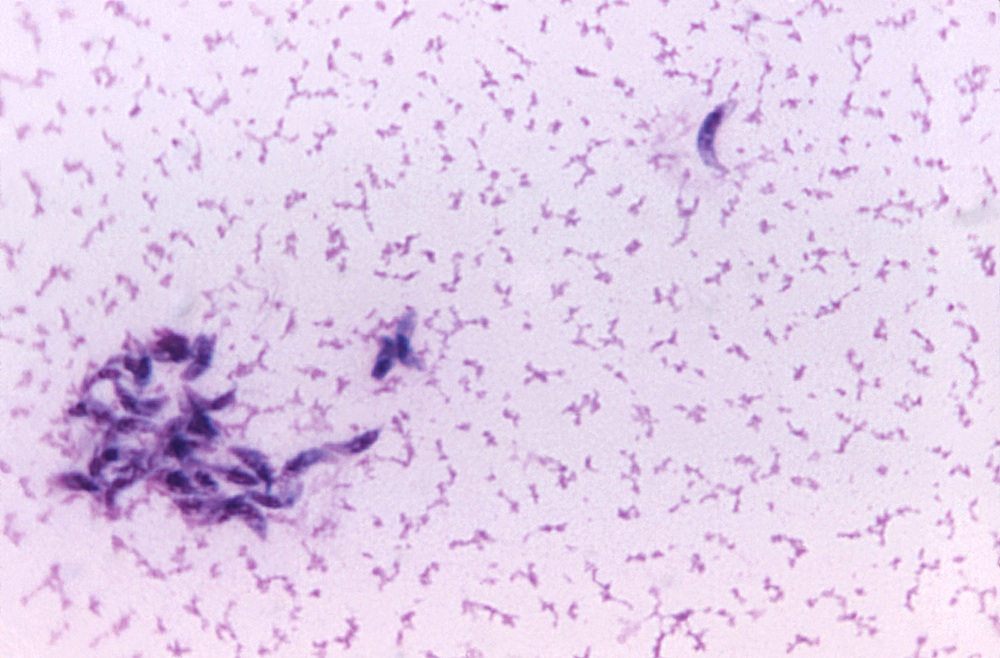Parasite found in cat poop linked to higher brain cancer risk in humans
Exposure to Toxoplasma gondii, which reproduces in cats and most often spreads to humans through raw meat, may increase the risk of brain cancer.

Here's another reason to cook your meat and take care around cat litter: The parasite Toxoplasma gondii, which reproduces in cats and most often spreads to humans through raw meat, may increase the risk of brain cancer in humans, a new study suggests.
The researchers found a link between the presence of T. gondii antibodies in people's blood, indicating previous exposure to the parasite, and the development of glioma, the most common type of brain cancer, several years later.
The findings, published Monday (Jan. 11) in the International Journal of Cancer, "suggest that individuals with higher exposure to the T. gondii parasite are more likely to go on to develop glioma," study co-author Anna Coghill, a cancer epidemiologist at the Moffitt Cancer Center in Tampa, Florida, said in a statement. However, Coghill cautioned that the current findings "need to be replicated in a larger and more diverse group of individuals" and that the average person's overall risk of developing glioma in their lifetime remains low.
In addition, the current study cannot prove a cause-and-effect relationship. "This does not mean that T. gondii definitely causes glioma in all situations,"study co-author James Hodge, an epidemiologist at the American Cancer Society in Atlanta, said in the statement. "Some people with glioma have no T. gondii antibodies, and vice versa."
Related: 7 strange facts about the 'mind-control' parasite Toxoplasma gondii
Brain parasite
T. gondii infects most warm-blooded animals, including humans. However, it undergoes sexual replication only in cats, so it must infect them to complete its life cycle. The parasite, which can infect the brain, is known for making infected rodents less wary of cats and facilitating its own reproduction. It's been associated with risk-taking behavior in humans, too. Though humans can be exposed to the parasite by scooping cat litter from an infected pet, a more common exposure route is through the ingestion of raw or undercooked meat from an infected animal.
T. gondii infections, known as toxoplasmosis, are common, affecting an estimated 2 billion people worldwide and 40 million in the United States, Live Science previously reported. Most people with the infection have no symptoms, because their immune systems keep the parasite in check, but in rare cases, the parasite can cause serious symptoms, including vision loss, according to the Centers for Disease Control and Prevention (CDC).
Get the world’s most fascinating discoveries delivered straight to your inbox.
Glioma is a deadly cancer, and glioblastoma is its deadliest subtype. The estimated five-year survival rate of glioblastoma is just 6% in people ages 55 and older, compared with that of the general population who don't have the cancer, according to the American Cancer Society. Risk factors for glioma include being male, non-Hispanic white, older and taller.
To examine the influence of T. gondii exposure on the risk of developing glioma, the researchers looked for antibodies to T. gondii in blood samples from people who had glioma (the samples were collected several years before their diagnosis) as well as a cancer-free control group. The researchers used blood samples and data from participants in two earlier studies: the American Cancer Society's Cancer Prevention Study-II Nutrition Cohort (CPSII-NC) and the Norwegian Cancer Registry's Janus Serum Bank (Janus).
Participants with glioma were more likely than control-group participants to have had antibodies to T. gondii in their blood samples, the researchers found. Additionally, in participants from the Janus study, the risk of glioblastoma increased with T. gondii antibody levels, meaning the higher their levels of antibodies were, the stronger their risk was, the researchers found. However, the association between T. gondii exposure and glioma risk was not statistically meaningful for every individual antibody tested and every glioma subtype.
This was the first prospective study — that is, one that examined T. gondii exposure before cancer diagnosis — to report an association between T. gondii exposure and glioma development, the authors wrote. This study design allowed the researchers to avoid the possibility that a glioma-parasite link was actually due to gliomas increasing the risk of infection with the parasite.
The identification of T. gondii as a risk factor for glioma could have practical implications. While most risk factors for glioma are not modifiable, parasite exposure is something people can try to avoid, the authors noted.
If other studies confirm these findings, "reducing exposure to this common food-borne pathogen would offer the first tangible opportunity for prevention of this highly aggressive brain tumor," they concluded.
Geoff Hide, a parasitologist at the University of Salford in the United Kingdom, agreed that "in principle, reducing T. gondii exposure is likely to prevent some gliomas — probably because the immune system is less stressed." Hide was not involved with the current study, but he co-authored a 2019 study in the journal ERJ Open Research reporting a link between the presence of T. gondii antibodies and lung cancer.
"This study suggests an association between exposure to Toxoplasma gondii and increased glioma risk," Dr. Craig Horbinski, a neuropathologist at Northwestern University's Feinberg School of Medicine in Chicago, told Live Science in an email. "If the connection is real, then preventing such exposure might reduce the risk of developing these usually lethal cancers."
But both Horbinski, who was not involved in the research, and the study authors believe that more data are needed to determine whether the association between parasite exposure and glioma development holds true. "The data are interesting but are not sufficient to draw any firm conclusions," Horbinski said.
In the future, researchers should do more studies on larger populations that include more cases of glioma, Horbinski said. "That's the only way to resolve this controversy," he added.
Originally published on Live Science.

Ashley P. Taylor is a writer based in Brooklyn, New York. As a science writer, she focuses on molecular biology and health, though she enjoys learning about experiments of all kinds. Ashley's work has appeared in Live Science, The New York Times blogs, The Scientist, Yale Medicine and PopularMechanics.com. Ashley studied biology at Oberlin College, worked in several labs and earned a master's degree in science journalism from New York University's Science, Health and Environmental Reporting Program.


